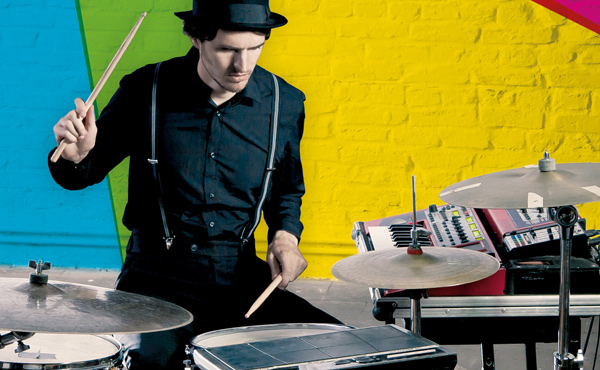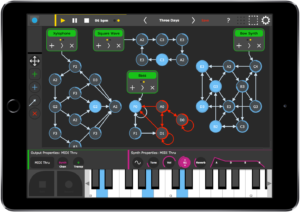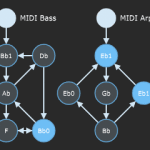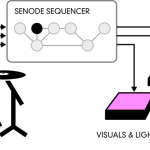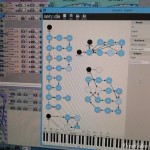“Souvenir” is the first single from my upcoming Album Monolog Memories, a collection of recordings from the years 2014–2022. The song is a calm and cinematic homage to everyone who likes to stare at the night sky, waiting for a magic moment to happen. It is based on a live recording from a soundtrack performance for Godfrey Reggio’s 1982 movie Koyaanisqatsi and has been edited to combine two alternate drum takes simultaneously. I tried to resemble my impressions from these performances in the video, using public domain footage from Prelinger Archives. Enjoy and share!
Senode – Graphical Step Sequencer Available now for iPad
I’m very happy to announce that Senode is now available as an iOS app for the iPad. I’ve been using this sequencer as prototype for almost three years now in my live shows. Senode was already featured in Deutschlandfunk Kultur, Golem.de and TEDxCluj 2016 (see the performance video here). However, it took me many months to finish a version that everyone can easily use. Finally, it’s done!
Key features:
- graphical step sequencer with multi-touch interface
- unlimited polyphonic steps and directions
- integrated synthesizer
- step record function from MIDI in
- control external synths via MIDI out
- comes with tutorial and example patches I used in my album releases
Please see the updated web site for more features and information about this version. There will be more updates coming soon: MIDI bindings (especially for drummers), clock synchronization (for DAW users) and more iOS-related integration.
Enjoy this release and get inspired by the possibilities of Senode!
New Release: Telegram EP
Today is the release of my new album TELEGRAM EP – a collection of dance tracks from my “mad scientist drummer” solo performance. It contains two new Singles (Impuls and Telegram), two remixes (one is featuring long-time collaborator Jürgen Schwer on guitar) and two remakes of songs that you may already have heard on the “Attemp to change a running system e.p.”. Watch the nice time lapse and slow motion video we did in Berlin:
Thanks to Daniel Kuhn, Buenos Diaz, the video team, Klunkerkranich and Antje Øklesund to make this happen. The release party will take place on 03.09.2016 at Panke. Come over and grab a CD. Looking forward to play in Berlin again!
- Digital download: iTunes / Amazon MP3 / 7digital 24bit FLAC
- Physical CD: beeah–music Shop
Senode – A Graphical MIDI Sequencer
I am very happy to present you my new music application Senode. Some time ago, I developed a prototype for a finite state machine sequencer, which was so much fun to play that I needed to come up with a productive version. The basic idea of Senode is to draw your entire composition as a cyclic graph of nodes and edges. Each node can generate events, such as notes, chords, effects, or any other MIDI or OSC message. You can now use any incoming signal or a clock to traverse the graph with one or more tokens. There are many interaction options that let you decide the generation, direction, transformation and synchronization of the tokens. At all times, your graphical score is perfectly readable. This makes this sequencer the perfect tool for interactive performance of pre-written and generative music. Let’s have a demo:
I use Senode as the only sequencer in my live setup. All songs are patched inside the program and are controlled via MIDI. I use the G2 Modular to generate clock signals and include signals from my drums to trigger important events on the graph. Senode generates MIDI messages for the Nord Modular G2 and Nord Lead 4R synthesizers and the Pianoteq VST sampler.
For more information and a release date, please sign up to the newsletter on the Senode Website at www.senode.org or follow @senode on Twitter. Thanks!

